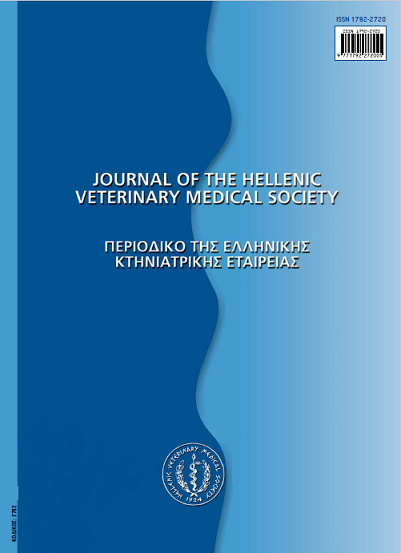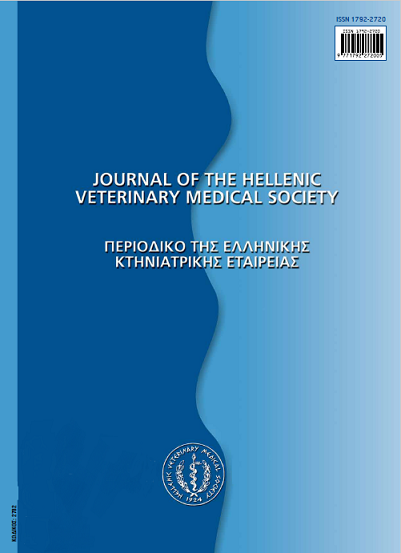Evaluation of Intraocular Pressure (IOP) Regarding Circadian Rhythm, Age, Sex and Eye Side in Awassi Sheep
Resumen
Measurement of intraocular pressure (IOP) in domestic animals has become a part of routine eye examination with advent of applanation tonometer. Delayed control of high IOP may lead to permanent blindness due to retinal ganglion cells dysfunction and optic nerve degeneration. This study aimed at evaluating IOP of Awassi sheep with respect to circadian rhythm, age, sex and eye sides and finally to establish a reference (baseline, normal) IOP value for this particular species. A total of 24 healthy sheep with different ages and sexes were used. The animals were divided into 2 equal groups, <1 (6 male, 6 female, n = 12) and ≥1 (6 male, 6 female, n = 12) years old. IOP measurements were performed twice, in the morning (6:00 a.m.) and in the evening (8:00 p.m.) with Tono-pen Vet® applanation tonometer. Mean IOP in the animals decreased from 16.21 mmHg in the morning to 12.65 mmHg in the evening with an approximately rate of 22% (P <0.0001). Comparison of mean IOP values of right eyes (n=12) to the left (n=12), male (n=48) to female (n=48), and ages < 1 (n=48) to ≥ 1 (n=48) showed no difference (P >0.05). The reference IOP for this animal was calculated as 14.43±2.72 mmHg notwithstanding any variable. It was concluded that in this breed IOP values can vary significantly as far as circadian rhythm is concerned and Tono-pen Vet® can be used for sheep IOP measurement as an alternative to other applanation tonometry.
Article Details
- Cómo citar
-
KULUALP, K., KILIҪ S., ÇAKIR, S., & ORHAN, C. (2018). Evaluation of Intraocular Pressure (IOP) Regarding Circadian Rhythm, Age, Sex and Eye Side in Awassi Sheep. Journal of the Hellenic Veterinary Medical Society, 69(2), 959–964. https://doi.org/10.12681/jhvms.18018
- Número
- Vol. 69 Núm. 2 (2018)
- Sección
- Research Articles

Esta obra está bajo una licencia internacional Creative Commons Atribución-NoComercial 4.0.
Authors who publish with this journal agree to the following terms:
· Authors retain copyright and grant the journal right of first publication with the work simultaneously licensed under a Creative Commons Attribution Non-Commercial License that allows others to share the work with an acknowledgement of the work's authorship and initial publication in this journal.
· Authors are able to enter into separate, additional contractual arrangements for the non-exclusive distribution of the journal's published version of the work (e.g. post it to an institutional repository or publish it in a book), with an acknowledgement of its initial publication in this journal.
· Authors are permitted and encouraged to post their work online (preferably in institutional repositories or on their website) prior to and during the submission process, as it can lead to productive exchanges, as well as earlier and greater citation of published work.




